by Lisa Cooke | Nov 19, 2014 | 01 What's New, DNA, Family Tree Magazine, Genealogy TV
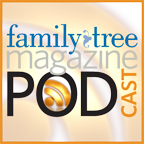 The newest episode of the Family Tree Magazine podcast is now online for your listening pleasure! Catch the latest news and a special spotlight on DNA with chats with THREE leading voices in genetic genealogy.
The newest episode of the Family Tree Magazine podcast is now online for your listening pleasure! Catch the latest news and a special spotlight on DNA with chats with THREE leading voices in genetic genealogy.
The latest and greatest in genetic genealogy!
It is so exciting to watch this industry move forward–so quickly and with such fantastic consequences for genealogists.
- Catch Lisa’s exclusive interview with genetic genealogist CeCe Moore, who talks about what it’s like to research for the PBS show “Finding Your Roots with Henry Louis Gates, Jr.”
- Lisa also gets a behind-the-scenes look at leading genetic genealogy company Family Tree DNA with founder Bennett Greenspan.
- Finally, Family Tree University’s resident DNA expert and instructor Blaine Bettinger talks about common misconceptions in using DNA for genealogy–and advice on using genetics to bust your brick walls.
News you can use and more
Of course, as usual in the Family Tree Magazine podcast, you’ll hear “News from the Blogosphere” with Editor Diane Haddad, and Lisa stops by the Publisher’s Desk to chat with Allison Dolan, who shares some perspective on the evolution of DNA testing for genealogists.
by Lisa Cooke | Nov 13, 2014 | 01 What's New, Ancestry, DNA, Gifts, Records & databases
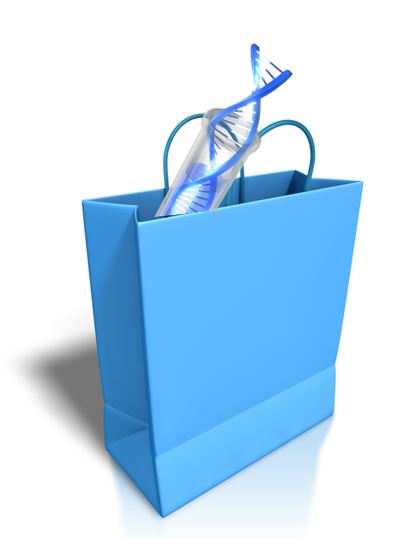 Savvy shopping can save you money and time. So what does savvy DNA shopping look like? Genetic genealogy tests–yDNA, autosomal and mDNA–do require a financial investment. They aren’t cheap. But they can save you hours of traditional research and give you results that no paper trail may provide.
Savvy shopping can save you money and time. So what does savvy DNA shopping look like? Genetic genealogy tests–yDNA, autosomal and mDNA–do require a financial investment. They aren’t cheap. But they can save you hours of traditional research and give you results that no paper trail may provide.
Three main companies are currently selling autosomal DNA tests (that’s the test that is not limited to a direct maternal or a direct paternal line, and that can help you find genetic cousins with connections back as far as six or seven generations). Those three companies, 23andMe.com, DNA Ancestry and Family Tree DNA are all competing for you genetic genealogy dollar. All offer a good service, and it can be difficult to decide who to give your $99 to.
and Family Tree DNA are all competing for you genetic genealogy dollar. All offer a good service, and it can be difficult to decide who to give your $99 to.
When your success or failure in finding matches depends entirely on who else has also been tested, it would be nice to have a crystal ball to tell you which testing company has the most participants who are useful to your research. FTDNA has no crystal ball, but they now are offering a reasonable substitute: FREE access to their database for anyone who has test results from 23andMe (if you received results before November of 2013) and AncestryDNA . Yes, I said FREE!
. Yes, I said FREE!
There are conditions. You can see your first 20 matches (but they can’t see you), and try out some of the tools that FTDNA has to help you identify how you are related to others. To have full access to the tools and results, you can pay $38, or just recruit four of your family members or friends to transfer, and then your transfer is FREE.
So, if you have been tested by Ancestry or 23andMe, run, don’t walk, to transfer your Y-DNA results to Family Tree DNA and take a look inside their version of the crystal ball. If you haven’t “done DNA” yet, currently the best option is to be tested with AncestryDNA and then transfer to FTDNA.” (watch for holiday sales, which would probably drop the price to $79). This gives you access to TWO databases of potential relatives for around $110–if you are a savvy shopper!
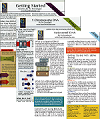
Final DNA shopping tip: be an educated consumer! Check out these quick guides I wrote to help genealogists find and use the DNA products that will help their research. Purchase each guide individually or pick up all 4 for the best deal!
Visit my website to learn about expert consultations with me. You’ll get customized guidance on which tests to order and how to maximize your results for your genealogy research.
by Lisa Cooke | Oct 19, 2014 | 01 What's New, Ancestry, DNA
 You may recall from our recent DNA discussion on the Genealogy Gems podcast (Episode 168) that Ancestry.com recently discontinued their mtDNA and YDNA tests (the two that trace our direct maternal and direct paternal lines) to focus on autosomal DNA (which delivers information about both your mother’s and your father’s side of your ancestral tree).
You may recall from our recent DNA discussion on the Genealogy Gems podcast (Episode 168) that Ancestry.com recently discontinued their mtDNA and YDNA tests (the two that trace our direct maternal and direct paternal lines) to focus on autosomal DNA (which delivers information about both your mother’s and your father’s side of your ancestral tree).
Well, recently I attended an all-day meeting hosted by Ancestry.com: a summit to talk about current trends and accomplishments at Ancestry DNA , and ideas about the future of DNA testing at Ancestry.com.
, and ideas about the future of DNA testing at Ancestry.com.
The meeting included a diverse group of Ancestry representatives, from CEO Tim Sullivan to members of the marketing, scientific, communications, and even computer science departments, as well as some of the top voices in genetic genealogy. It was an open and lively discussion, and I walked away with a few gems I want to share with you today.
More Powerful DNA Hints Coming
In AncestryDNA, the ‘shaky leaf” hints are meant to help you find a common ancestor between you and your DNA matches. The computer code behind the old hints was not very efficient. Lazy, in fact. It started at the bottom of your tree—and the bottom of your match’s tree—and slapped on a shaky leaf at the first sign of a shared common ancestor.
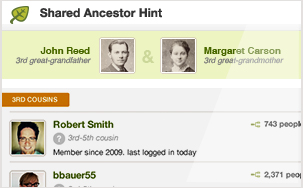 While this method worked for a large number of cases, it was leaving a lot of stones unturned. But the IT guys at Ancestry have beefed up the computer power, allowing them to cover a much greater distance through our trees and the trees of our matches before making a judgment about the best place to assign that shaky leaf.
While this method worked for a large number of cases, it was leaving a lot of stones unturned. But the IT guys at Ancestry have beefed up the computer power, allowing them to cover a much greater distance through our trees and the trees of our matches before making a judgment about the best place to assign that shaky leaf.
The result? Better hints about how you and your match COULD be related. Remember, the leaf is still just a SUGGESTION on how you and your match might be related. It is not a crystal ball.
Did You Know?
- Ancestry DOES store your DNA samples in a secure location.
- Ancestry spent months designing their own DNA collection kit.
- Ancestry was able to attract some of the brightest scientists in the field of population genetics because of YOU. You with your documented pedigree charts and your willingness to help move this science of discovering our ancestors forward.
Looking Ahead
There is no question that the genetic genealogy industry is rapidly advancing, and our discussion with Ancestry certainly didn’t disappoint. While I will be sharing with you in future posts about some of the exciting changes, I do want you to be ready for one that buy anxiety medication online uk will be coming online fairly soon.
It has to do with your matches. If you have been tested by AncestryDNA, you may have been initially excited, then nearly immediately overwhelmed, by the number of individuals listed in your match page, all claiming to have some kind of connection to you and your family tree.
All three major genetic genealogy testing companies (AncestryDNA, Family Tree DNA, and 23andMe) are using basically the same laboratory methods to glean information from your DNA. What differs is how they use that data to draw conclusions about your ethnic heritage and about your relationships to other individuals. As it turns out, AncestryDNA has been reporting far more individuals as your relatives than it should have.
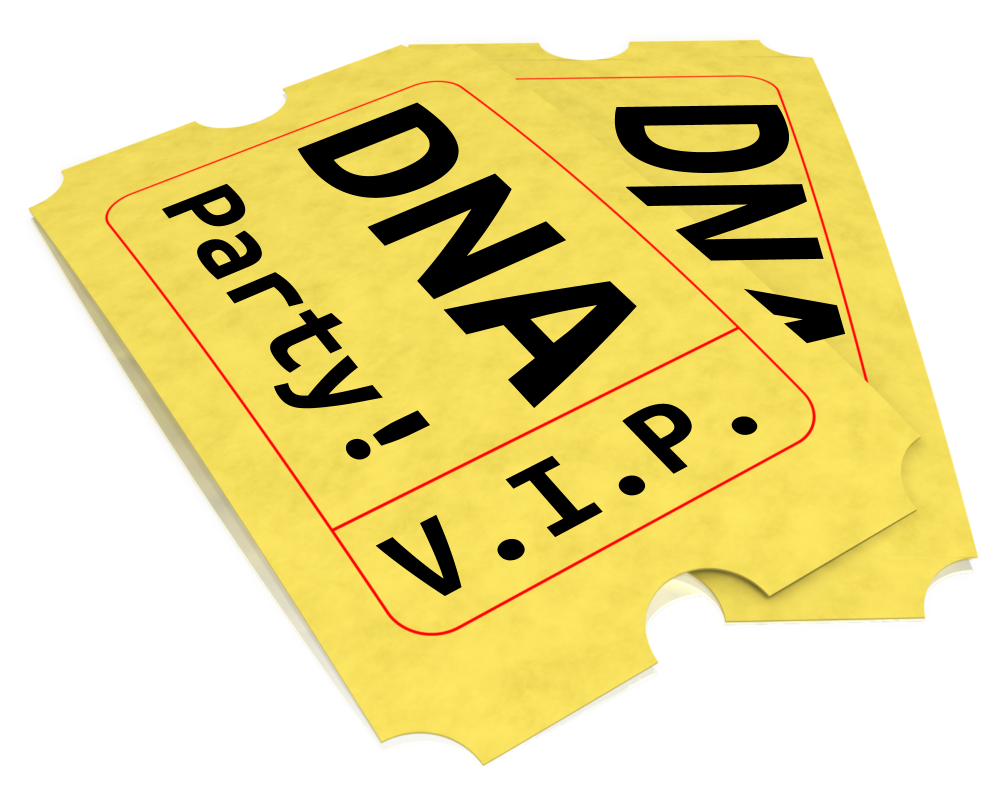 You can think of it like this: You have sent out tickets, in the form of your genetic code, to an exclusive party where you (of course!) are the star. However, you have lost the guest list and you are counting on the testing company to check the ticket of each guest before they enter your party to be sure they were really invited.
You can think of it like this: You have sent out tickets, in the form of your genetic code, to an exclusive party where you (of course!) are the star. However, you have lost the guest list and you are counting on the testing company to check the ticket of each guest before they enter your party to be sure they were really invited.
AncestryDNA was relatively new in the role of party bouncer, and in the interest of not turning away any VIP guests, they initially allowed guests into your party who had (gasp!) forged tickets!! But as AncestryDNA admits more guests, the experience it’s gained in party monitoring is starting to show.
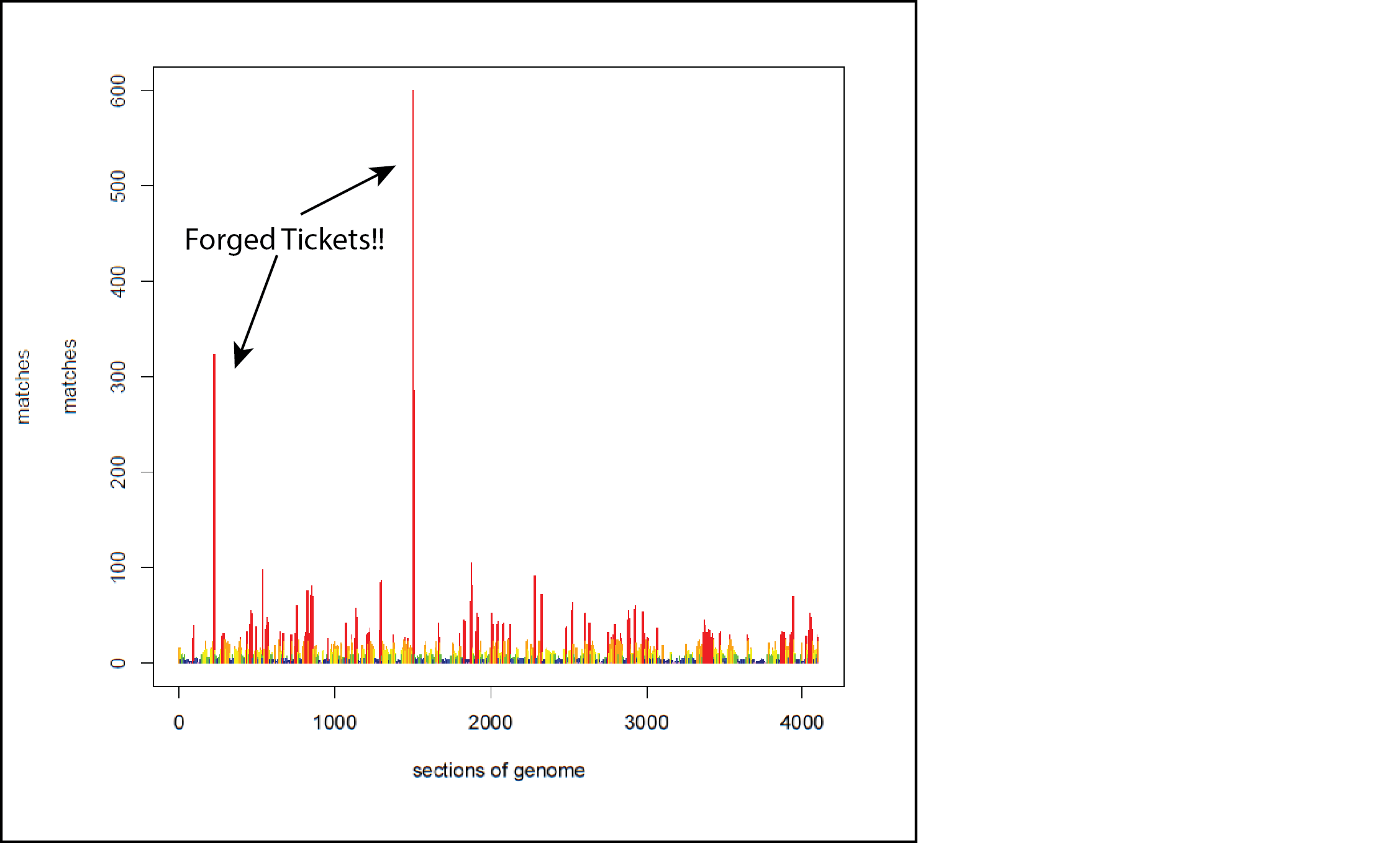 You see, each of the forged tickets has some unique qualities that have started to send up red flags to the team of scientists at AncestryDNA
You see, each of the forged tickets has some unique qualities that have started to send up red flags to the team of scientists at AncestryDNA . They are now in the process of carefully documenting what each forged ticket looks like and tossing those unwanted guests out on their ear.
. They are now in the process of carefully documenting what each forged ticket looks like and tossing those unwanted guests out on their ear.
The short of it: in the near future your match list at Ancestry will be much shorter. Which is good news to you, as it means only those invited genetic cousins will be around eating hors d’ oeuvres and ready to talk about your shared common ancestry.
Each testing company has its strengths and weaknesses. It was good to have a bit of insight into this one company and come to a greater understanding about why it is they do what they do. It is a great time to be in this young genetic genealogy industry, with so much room to grow and change. I will let you know when I find the next genetic gem.
Disclosure: This article contains affiliate links and Genealogy Gems will be compensated if you make a purchase after clicking on these links (at no additional cost to you). Thank you for supporting Genealogy Gems!
by | Jul 2, 2014 | 01 What's New, Adoption, British, Inspiration
Two women born from the same womb lived their lives entirely separately–until recently, when these long-lost twins reunited.
TheBlaze.com reported on and followed up with a BBC video of the happy reunion. The article says the women set a world record for the longest-known separated twins. The women are likely fraternal twins, but at the time of the article, were awaiting DNA test results.
According to TheBlaze, “Both women were born in Aldershot, England, in 1936. Their mother, a domestic servant, decided to give up one of the girls after their birth father fled. [Elizabeth Hamel, the twin who was not adopted out] said she [the mom] kept her because she was born with curvature of the spine, which would have made it more difficult for her to be adopted.”
The article explains that Hamel grew up knowing she had a twin but never expecting to see her. Eventually she married an American and moved to the U.S. Meanwhile, her sister, Ann Hunt, was adopted and raised in England. She only learned about a year ago that she had a twin.
What a moving story! Ann and Elizabeth sure have a lot to catch up on. And how interesting to see sleuthing skills we use in genealogy–like a search for a mother and DNA testing to confirm relatedness–put into action to strengthen ties among living relatives.
by Lisa Cooke | Jun 30, 2014 | 01 What's New, Conferences, DNA
The fourth annual Forensic Genealogy Institute (FGI) will be held March 26-28, 2015, at the Wyndham Love Field Hotel in Dallas, Texas. Two concurrent, 20-hour 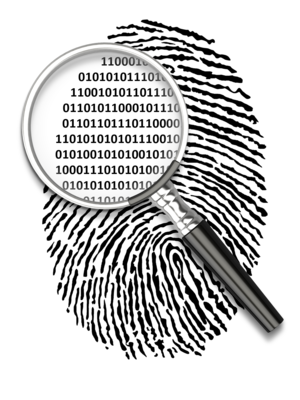 courses will debut: “Forensic Genealogy Master Practicum” and “Advanced Genetic Genealogy and Unknown-Parentage Cases.”
courses will debut: “Forensic Genealogy Master Practicum” and “Advanced Genetic Genealogy and Unknown-Parentage Cases.”
“FGI offers attendees one-of-a-kind education in forensic genealogy and access to expert forensic genealogists who can answer questions and act as mentors,” said Leslie Brinkley Lawson, CAFG President. “We are excited to offer FGI 2015 participants the opportunity to participate in an unprecedented forensic-genealogy practicum or to gain experience in cutting-edge genetic genealogical research.”
The genetic genealogy course sounds especially fascinating. The course description includes how-tos on developing custom DNA-testing plans, analyzing genetic test results and integrating traditional genealogical research with DNA test results to address research questions.
“Genealogists who can use DNA to successfully address unknown-parentage cases are in great demand,” says course coordinator CeCe Moore. “This unique course offers in-depth instruction of the methodologies used by professional genetic genealogists.”
Each FGI 2015 course offers 20 hours of instruction over just three days, minimizing hotel costs and time away from families and jobs. The learning opportunities presented at FGI are created specifically for professional, practicing genealogists who specialize or seek to specialize in forensic genealogy.
Registration for the 2015 Forensic Genealogy conference will open in summer 2014.
 The newest episode of the Family Tree Magazine podcast is now online for your listening pleasure! Catch the latest news and a special spotlight on DNA with chats with THREE leading voices in genetic genealogy.
The newest episode of the Family Tree Magazine podcast is now online for your listening pleasure! Catch the latest news and a special spotlight on DNA with chats with THREE leading voices in genetic genealogy.




 You can think of it like this: You have sent out tickets, in the form of your genetic code, to an exclusive party where you (of course!) are the star. However, you have lost the guest list and you are counting on the testing company to check the ticket of each guest before they enter your party to be sure they were really invited.
You can think of it like this: You have sent out tickets, in the form of your genetic code, to an exclusive party where you (of course!) are the star. However, you have lost the guest list and you are counting on the testing company to check the ticket of each guest before they enter your party to be sure they were really invited.
 courses will debut: “Forensic Genealogy Master Practicum” and “Advanced Genetic Genealogy and Unknown-Parentage Cases.”
courses will debut: “Forensic Genealogy Master Practicum” and “Advanced Genetic Genealogy and Unknown-Parentage Cases.”


